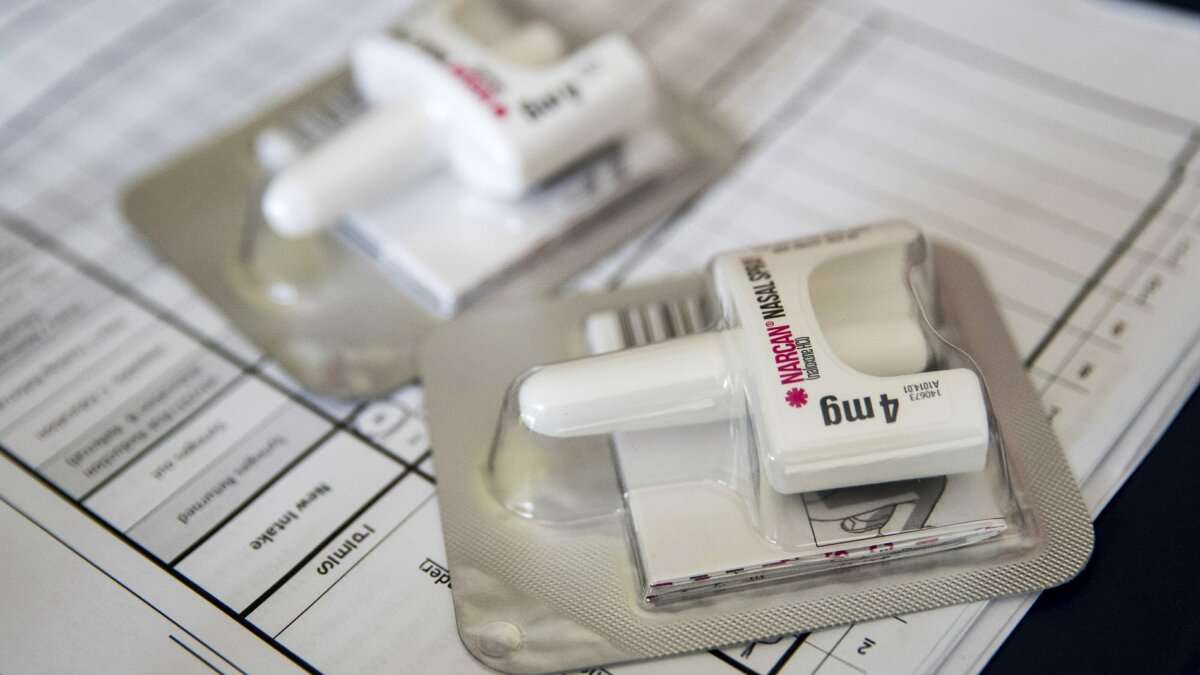
By NATE KING
Salina Post
Packaging labels got in the way of Saline County Health Department officials distributing roughly $30,000 worth of naloxone.
Back in September, the Saline County Health Department received 240 boxes containing naloxone hydrochloride nasal spray devices, the opioid overdose-reversing drug.
Who was the sender of this large shipment of life-saving medication? The Kansas Department of Health and Environment.
Saline County Health Director Jason Tiller said his staff was only notified two days before they received the shipment.
"We got it (the naloxone), and there was maybe a day heads up that this might be coming," Tiller said. "So it wasn't a 100%, total surprise. When we first got it, we were excited because then it's like 'How do we get this out into the community?'"
In total, six counties received shipments of naloxone in September. According to Tiller, KDHE determined the amount of dosages shipped to each county based on data showing higher rates of illegal opioid use.
"The group that was actually in charge of it at the KDHE ended up selecting six counties, I think using some information from maybe a year or two before," Tiller said. "There were a lot of steps along the way that could have probably been done differently. But regardless, this is where we're at."
According to KDHE, from 2012 to 2021, there were 91 drug poisoning deaths in Saline County resulting from a drug overdose. On average, this equates to 17.55 deaths per 100,000 persons, per year over the 10 years.
KDHE published an assessment in September 2022 that found, of Kansas' 105 counties 21 were found to have "the highest relative vulnerability" to opioid overdose-related deaths.
Saline County made that list, as did Sedgwick, Reno, Shawnee, Douglas and Sumner counties.
Tiller's plans to distribute the naloxone throughout Saline County were soon put on temporary pause because of what he described as bureaucracy and KDHE's lack of planning.
The naloxone devices delivered to the Saline County Health Department aren't labeled as over-the-counter; they are labeled as prescription only or Rx only.
According to Tiller, state statutes dictate how and who can distribute Rx-only naloxone. But, he said, the two types of medication are otherwise the same aside from the packaging.
"It's the same medication. For instance, I can walk into CVS or another drugstore where they have Naloxone OTC but it's listed as an OTC or over the counter," Tiller said. "There are different laws and regulations that pertain to Rx-only medications. That prevents us from being able to just hand it out, which is a real pain."
Three days after SCHD received the shipment, KDHE sent out an email to the health directors for the six counties that received naloxone, telling them not to distribute the medication until they gave further guidance.
"The KDHE is like any state organization. They're big and sometimes you get disconnects between different departments and divisions," Tiller said.
For about a month, Tiller begged KDHE for a solution in phone calls and emails.
"Honestly, it was probably less conversational and more like me harassing them about if they had figured it out yet," Tiller said.
Eventually, KDHE hosted a webinar on Oct. 17 to tell health directors what its plan was to distribute the naloxone to first responders.
As of Nov. 14 all 240 boxes have been deployed to first responder groups.
According to Anabel Fauto, Saline County Health Department Health Educator, Saline County EMS, and the Salina Police Department received 80 boxes each and the Saline County Sheriff's Office received 60 boxes.





